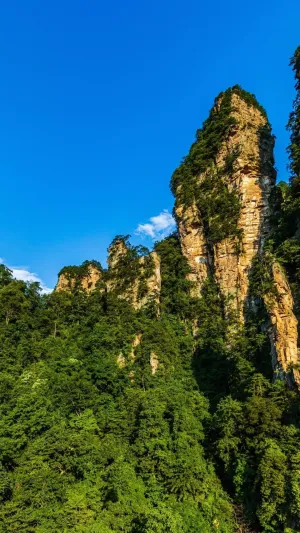Forest coverage refers to a measure of the proportion of forest area to total land area.
It is an important indicator that reflects the actual level of forest resources and land occupied by forests in a country or region. Forest coverage is typically expressed as a percentage.
The world's forest coverage rates vary across continents: North America stands at 34%, South America and Europe at approximately 30%, Asia at 15%, the Pacific region at 10%, and Africa at a mere 6%.
South America harbors 21% of the world's forests, with 45% of them being tropical forests. Brazil alone encompasses 30% of the world's tropical forests. However, the country loses 3.2 million hectares of forest every year. According to the World Food and Agriculture Organization report, Brazil produced 103 million cubic meters of logs in 2000 alone.
Areas located in climate zones with more precipitation, such as tropical rainforest climate, tropical marine climate, tropical monsoon climate, subtropical marine monsoon climate, etc., generally have a high forest coverage rate.
However, it is important to note that when calculating the forest coverage rate, the state includes not only the area covered by dense forests but also considers shrubs, farmland forest network trees, and the area covered by surrounding trees. The forest coverage rate serves as a significant indicator reflecting the extent of forest resources and afforestation efforts.
1. Natural conditions will affect vegetation coverage. Cities with mountains, water, and good climate conditions have vibrant natural vegetation, artificial vegetation is easy to cultivate, and the green coverage rate is relatively high.
However, the natural conditions are harsh, such as arid, deserts and other areas, where the natural vegetation is sparse, artificial vegetation is difficult to cultivate, and the vegetation coverage rate is low.
2. The scale of the city will affect vegetation coverage. Generally speaking, the larger the city size, the higher the population and development density. While the smaller the green area, the lower the vegetation coverage rate, and the vegetation coverage rate is generally higher in small cities.
3. The nature, economic strength, the development history of the city, etc. will affect the vegetation coverage. In addition to natural conditions and socioeconomic conditions, urban planning concepts are also an important factor.
If the city is only regarded as a social economy, the environmental benefits of the city are easily ignored. Then, even if other conditions are favorable, vegetation coverage may still be low.
The United Nations Environment Program reports that the world's forests have been halved on record, mainly due to human activities. According to the 2001 report of the Food and Agriculture Organization of the United Nations, the global forest fell from 3.96 billion hectares in 1990 to 3.87 billion hectares in 2000. Nearly 10 million hectares of forests are lost every year around the world.
It is imperative for us to take proactive measures to prevent the loss of forest coverage and uphold a thriving green Earth. By promoting sustainable practices such as reforestation, responsible land management, and conservation efforts, we can safeguard the invaluable benefits that forests provide.





